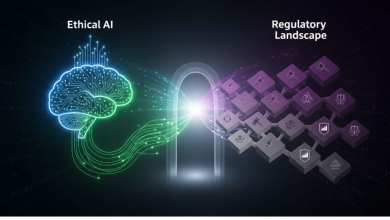Your heating and cooling system works all day, often unnoticed, yet it consumes more energy than anything else in your home. With a few smart sensors and an AI brain, your system can save money, catch small problems early, and prevent wasted energy before the next utility bill arrives.
This guide explains real-time HVAC monitoring, shows why it matters for homeowners, and highlights how simple upgrades can protect your comfort, health, and wallet.
Why HVAC Needs Better Monitoring
Heating and cooling consume the largest share of energy in most homes, making up roughly 43% of monthly electricity bills. Even small inefficiencies such as dirty filters, leaky ducts, or worn-out components can waste 5% or more of that energy. This not only increases costs but also puts extra strain on your HVAC system.
The Problem with “Blind” HVAC Systems
Most systems operate without feedback, cycling on and off with no insight into performance. Minor issues often go unnoticed until they escalate into expensive repairs or create uncomfortable indoor conditions.
How Real-Time Monitoring Helps
Real-time monitoring gives homeowners constant, actionable data to manage their HVAC system proactively. Key benefits include:
- Energy visibility: Track usage patterns and spot spikes before they affect your bills.
- Performance insights: See temperature swings and component behavior in real time.
- Preventive action: Identify small problems early, avoiding costly breakdowns and discomfort.
By turning data into clear, understandable information on a mobile app, homeowners can make informed decisions and keep their HVAC systems running efficiently.
How Real-Time Monitoring Works
Real-time monitoring combines simple hardware with smart software to give your HVAC system a constant “health check.” Here’s how it functions:
- Clip-on sensors: These attach to refrigerant lines, duct surfaces, and electrical power leads, collecting key data on temperature, airflow, and energy use.
- Wireless hub: The hub gathers sensor readings and sends them securely to the cloud every few seconds.
- AI analysis: Advanced software compares live readings to historical performance, manufacturer specifications, and local weather patterns to spot anomalies.
- Instant alerts: When the system detects unusual trends like rising fan amps or falling supply air temperatures, it immediately notifies you and/or your technician.
- Actionable recommendations: The app provides clear steps or warnings so fixes happen before comfort or efficiency is compromised.
Most kits install during a single service visit and integrate seamlessly with modern smart thermostats. This makes the upgrade process simple, fast, and effective.
How AI Turns Data into Action
AI takes the raw data from sensors and turns it into actionable insights, creating a proactive approach to HVAC management:
- Predictive detection: AI spots patterns humans often miss, identifying early signs of component stress, leaks, or airflow problems.
- Energy optimization: By learning your home’s heating and cooling patterns, AI can adjust temperature setpoints and fan speeds to reduce energy use without affecting comfort.
- Continuous feedback loop: AI monitors, adjusts, and verifies improvements in real time, ensuring your system remains efficient and responsive.
Studies show predictive fault detection combined with self-tuning controls can reduce HVAC energy use by 15–25%, with smart thermostats adding another 8% in savings. Together, these technologies keep your system running efficiently and extend its lifespan.
Common Faults AI Finds Early
Real-time AI monitoring can detect small problems before they escalate, saving time, money, and stress:
- Slow refrigerant leaks: Detected by subtle changes in temperature differentials and increased compressor energy use.
- Clogged filters or coils: AI recognizes airflow drops or increased fan effort before comfort is affected.
- Short-cycling compressors: Rapid on/off cycles indicate potential capacitor or motor issues.
- Failed zone dampers: Uneven heating or cooling alerts the system to airflow distribution problems in different rooms.
Catching these issues early often turns a minor repair into a major cost-saving measure, preventing more expensive breakdowns later.
Practical Benefits of Real-Time AI Monitoring
Monitoring your HVAC in real time offers measurable advantages beyond energy savings:
- Lower energy bills: AI with a learning thermostat can reduce total HVAC energy use by around 20%.
- Fewer emergency repairs: Early alerts allow you to replace minor components before they damage expensive equipment.
- Longer equipment life: Smoother, more consistent operation reduces wear and extends system longevity.
- Healthier indoor air: Humidity tracking and filter reminders help prevent mold growth and improve air quality.
- Remote control: Access the system from anywhere via an app, keeping your home comfortable even while away.
Cost, Savings, and Payback
| Item | Typical Cost (Approximate) | What It Covers |
| Sensor kit (3 to 5 probes) | $250 to $350 | Monitors temperature, refrigerant pressure, and electrical current |
| Cloud hub | $100 | Connects sensors to app and cloud for real-time updates |
| Professional setup | $150 to $250 | Installation, testing, and homeowner walkthrough |
| Smart thermostat + setup | $199 (common promotional offer) | Learns schedules, manages HVAC, and handles rebate paperwork |
Estimated total: $700–$900
- Average Texas households paid $165.82 per month for electricity in 2023 (~$1,990/year).
- HVAC accounts for roughly 40% of that cost (~$796/year).
- Reducing HVAC energy by 20% saves ~$159/year, plus ~$50 from a learning thermostat.
- Payback typically occurs within three to four years, with continued savings afterward.
Choosing Hardware and an Installer
Sensor selection:
- Must allow open data access for transparency and integration.
- Use long-range wireless (LoRa) or Bluetooth Low Energy (BLE) for reliable communication.
- Carry UL or ETL safety certifications to meet electrical standards.
Installer selection:
- Publishes clear, flat-rate fees with no hidden costs.
- Provides before-and-after efficiency reports.
- Can service both premium brands like Lennox and budget options like Goodman.
Local HVAC companies, such as The Chill Brothers, offer reliable installation and support for these upgrades.
Data Privacy and Security
Protecting your home’s HVAC data is critical:
- End-to-end encryption: All sensor traffic is securely transmitted.
- Access control: Two-factor login and role-based permissions ensure only authorized users can view or modify data.
- Local backups: Optional on-premise backups keep data within your home network, even if the internet goes down.
With these safeguards, homeowners can confidently monitor and optimize their HVAC system without compromising privacy.
Final Thoughts
Real-time monitoring transforms HVAC from a mystery into clear, actionable insights. AI converts data into energy savings, fewer breakdowns, and longer system life.
Whether you hire a bundled service or assemble the components yourself, this upgrade pays off in comfort and savings.
FAQs
How Does Real-Time AI Monitoring Reduce HVAC Energy Costs?
Real-time monitoring tracks system performance constantly and alerts you to inefficiencies, such as leaks or clogged filters. By addressing these issues early, HVAC systems run more efficiently, often reducing energy use by around 20%.
Can AI Monitoring Detect Problems Before They Become Expensive Repairs?
Yes. AI analyzes patterns in temperature, pressure, and electrical use to spot slow leaks, short-cycling compressors, or failing components. Early detection can turn a small repair into major savings.
Is Installing Real-Time Sensors Complicated for Homeowners?
No. Most kits are installed in a single service visit and work with existing smart thermostats. Technicians place sensors on refrigerant lines, ducts, and electrical leads, and connect them to a hub for live monitoring.
Will My Data Be Secure with AI HVAC Monitoring?
Yes. Systems use end-to-end encryption, two-factor authentication, and optional local backups. Only authorized users can view live readings or download performance logs, keeping your information private.
How Long Does It Take to See a Return on Investment?
The typical setup costs between $700 and $900. With average energy savings of about $159 per year from reduced HVAC usage and additional savings from a learning thermostat, most homeowners recoup the cost in three to four years.




